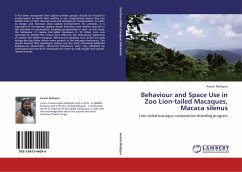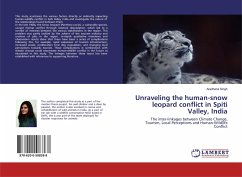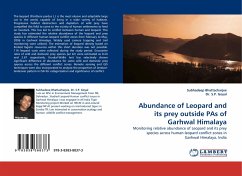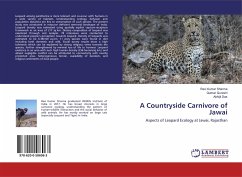
Environmental Influences on the Behaviour of Zoo Leopards in India
Zoo Leopard Behaviour in India
Versandkostenfrei!
Versandfertig in 6-10 Tagen
32,99 €
inkl. MwSt.

PAYBACK Punkte
16 °P sammeln!
A behavioural study conducted on sixteen singly-housed zoo leopards in India showed that stereotypic pacing was found to increase with enclosure size. Food-anticipatory behaviour was observed in all leopards before and during feed time. Individuals that were studied on-exhibit and off-exhibit exhibited higher levels of stereotypic behaviour off-exhibit and higher levels of activity behaviour on-exhibit. The presence of visitors also had a detrimental influence on the behaviour repertoire of captive leopards. The utilisation of space differed between singly and group-housed leopards. Most of th...
A behavioural study conducted on sixteen singly-housed zoo leopards in India showed that stereotypic pacing was found to increase with enclosure size. Food-anticipatory behaviour was observed in all leopards before and during feed time. Individuals that were studied on-exhibit and off-exhibit exhibited higher levels of stereotypic behaviour off-exhibit and higher levels of activity behaviour on-exhibit. The presence of visitors also had a detrimental influence on the behaviour repertoire of captive leopards. The utilisation of space differed between singly and group-housed leopards. Most of the leopards utilised the "edges" of their enclosure for stereotypic pacing. In enclosures that were structurally enriched with sleeping platforms, sheds or trees, leopards utilised the "enrich" zone of the enclosure for resting. Enclosures having logs and snags, the "enrich" zones is utilised to exhibit activity behaviour. Leopards in structurally enriched enclosures exhibited higher levels of activity and lower levels of resting than the barren enclosures.












